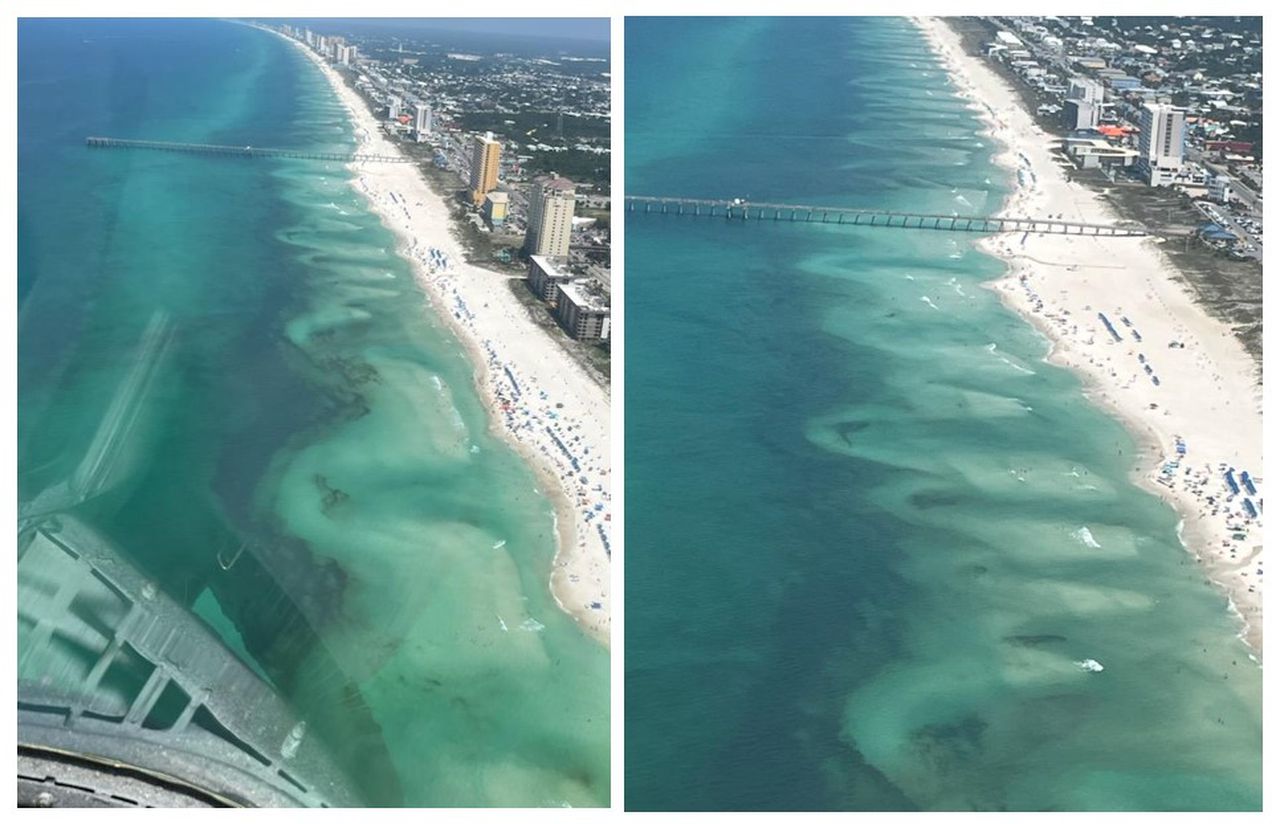What is a rip current? Why are they so dangerous? Are they the same as rip tides?
Ten people have drowned at Alabama and Florida panhandle beaches in less that two weeks as the threat from rip currents remains elevated in places like Panama City Beach for today and in coming days.
The deaths have prompted warnings from local officials, including cautions related to one of the most dangerous things a swimmer can face – rip currents.
According to the National Weather Service, rip currents are powerful, narrow channels of fast-moving water that are found along the Gulf Coast and the U.S. West coast, along the shores of the Great Lakes.
Rip currents are capable of moving up to 8 feet per second, faster than an Olympic swimmer. Rip currents pull people away from the shore, sweeping even the strongest swimmer away.
Exacerbating the situation, panicked swimmers often try to counter a rip current by swimming straight back to the store, putting themselves at risk of drowning because of fatigue. Rip currents are to blame for some 100 deaths annually in the U.S.
And while the terms are often confused, rip currents are different than rip tides. A rip tide is specific type of current that comes from the swift movement of tidal water through inlets and the mouths of estuaries, embayments and harbors.
If you are caught in a rip current, according to NWS:
- Remain calm to conserve energy and think clearly.
- Never fight against the current.
- Think of it like a treadmill that cannot be turned off, which you need to step to the side of.
- Swim out of the current in a direction following the shoreline. When out of the current, swim at an angle – away from the current-towards shore.
- If you are unable to swim out of the rip current, float or calmly tread water. When out of the current, swim towards shore.
- If you are still unable to reach shore, draw attention to yourself by waving your arm and yelling for help.
Helping someone who is caught in a rip current can also be dangerous. Here are NWS tips if you see someone caught in a rip current:
- Whenever possible, swim at a lifeguard-protected beach.
- Never swim alone.
- Learn how to swim in the surf. It’s not the same as swimming in a pool or lake.
- Be cautious at all times, especially when swimming at unguarded beaches. If in doubt, don’t go out.
- Obey all instructions and orders from lifeguards. Lifeguards are trained to identify potential hazards. Ask a lifeguard about the conditions before entering the water. This is part of their job.
- Stay at least 100 feet away from piers and jetties. Permanent rip currents often exist alongside these structures.
- Pay especially close attention to children and elderly when at the beach. Even in shallow water, wave action can cause loss of footing.
- Get help from a lifeguard.
- If a lifeguard s not available, have someone call 9-1-1.
- Throw the rip current victim something that floats–a lifejacket, a cooler, an inflatable ball.
- Yell instructions on how to escape.
- Remember, many people drown while trying to save someone else from a rip current.
